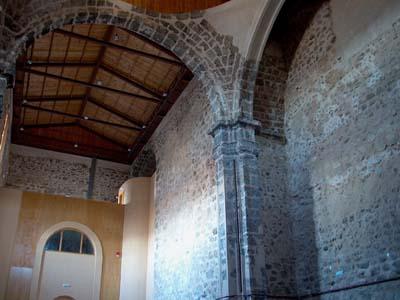The Church of Los Jesuitas
, Segura de la Sierra
Imagine, for a moment, a quiet afternoon in the year 1606. A priest named Manuel de Arceo is putting the finishing touches to the final chapter in a history of the foundation of Segura College. He does not wish to put himself centre stage, nor record his name for posterity; he is merely following the instructions he received from Rome, namely, to provide a record of the college’s Jesuit origins and prevent its history from being forgotten. A few days later Arceo received new instructions: he was to go to New Granada and take charge of the new Jesuit province.
Thanks to the work of Arceo, today we have access to a great deal of information regarding the Jesuit College in Segura de la Sierra. The college buildings that remain in the town were built as a result of the efforts of a Segura resident who wished to found a religious establishment. His name was Cristóbal Rodríguez de Moya and, when his wife died, he realised that upon his own death there would be problems over the legacy of his estate, given that none of his three daughters were married. As his daughters had decided to take holy orders, he made the decision to found a religious college.
An examination of the interior of the church of Los Jesuitas does not mean delving into the world of art history or performing an analysis of the restoration work that has been carried out on the building; rather, it means receiving an impression of the society of the late 16th century, gaining an insight into a religiousness that permeated every aspect of life and understanding the fears of the time, the fear of the devil or of dying a sinner. The church opens a window on to the daily life of a small mountain community, on to the lives of poor, dignified people that the Jesuits helped through their pastoral activities.
Visitors will also learn of another chapter in the story of Segura in the late 16th century, a chapter involving the Plague of 1596, the Famine of 1605, charitable acts, the fears and poverty of much of the population and the collective grief at the death of Francisca de Avilés, the youngest daughter of Cristóbal Rodríguez de Moya. The funeral arrangements for this woman must have been particularly affecting, as they involved a mass attended by the whole town; even the Franciscan monks from the monastery of Santa María de la Peña in Orcera came to pay their respects to the founder’s daughter.




